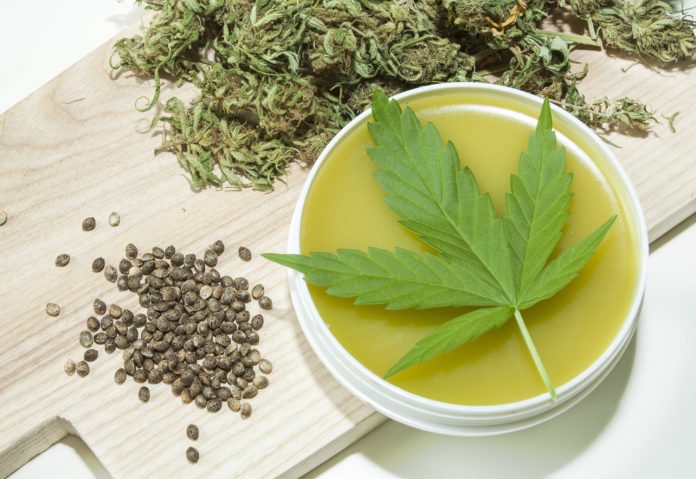The cultivation of cannabis at home is gaining popularity as laws and perceptions around its use evolve. However, with this green revolution comes the responsibility to cultivate these plants in ways that are kind to the environment and sustainable for the future.
Engaging in eco-friendly cannabis cultivation practices not only supports the health of our planet but also produces higher quality plants, enriching the experience for cultivators and consumers alike. This article delves into sustainable methods for home cannabis cultivation, offering practical advice and insights for those looking to reduce their environmental footprint while nurturing their green thumb.
Organic Cultivation
Understanding how to grow marijuana starts with the basics of organic cultivation, emphasizing soil health as the cornerstone of sustainable cannabis growth
Soil Health and Composition
Organic cultivation begins with the soil. A rich, living soil forms the foundation of sustainable cannabis growth, fostering a biodiverse ecosystem that supports plant health naturally.
Unlike conventional methods that rely heavily on chemical fertilizers, organic cultivation emphasizes compost, mulch, and green manures to enrich the soil. These natural amendments provide essential nutrients and improve soil structure, water retention, and microbial life, leading to robust plant growth without the need for synthetic inputs.
Pest Management
In organic cultivation, pest management relies on prevention, cultural practices, and biological control rather than chemical pesticides. Cultivators can introduce beneficial insects such as ladybugs and lacewings to control pest populations.
Companion planting — growing certain plants together — can also deter pests naturally. For example, planting basil alongside cannabis can repel thrips and flies, while marigolds can deter nematodes and other soil-borne pests. These methods enhance biodiversity, promote ecological balance, and ensure the production of clean, chemical-free cannabis.
How to Grow Marijuana Sustainably
Getting Started with the Basics
Before diving into the cultivation process, understanding the basic requirements of the cannabis plant is essential. This includes knowledge about the plant’s life cycle, the difference between indica, sativa, and hybrid strains, and the importance of choosing the right genetics for your environment. Starting with high-quality, organic seeds or clones can set the foundation for successful, sustainable growth.
Step-by-Step Guide to Eco-Friendly Cultivation
- Choosing Your Growing Medium: Opt for organic, sustainably sourced growing mediums that support healthy plant development and soil life. Coco coir, peat moss, and homemade compost can provide an excellent start for your cannabis plants, ensuring they receive the nutrients they need without the environmental toll of chemical fertilizers.
- Lighting and Environment: If growing indoors, select energy-efficient LED lighting to mimic the sun’s spectrum with minimal energy use. For outdoor growers, choosing a location that maximizes natural sunlight and protects plants from excessive wind or predators is crucial. Implementing companion planting can enhance your crop’s resilience and yield.
- Watering Practices: Employ water-conservation techniques such as drip irrigation or rain barrels to collect and recycle water. Monitoring soil moisture to avoid overwatering can save water and prevent root issues.
- Organic Pest and Disease Management: Adopt integrated pest management (IPM) strategies that focus on preventive measures, such as maintaining healthy soil, choosing resistant strains, and using natural predators or barriers to keep pests at bay.
- Harvesting and Curing: Harvest your plants when trichomes indicate peak THC/CBD levels. Dry and cure the buds in a controlled environment to sustainably preserve their potency and flavor.
Water Conservation
Efficient Irrigation Techniques
Water is a precious resource, and its conservation is paramount in sustainable cannabis cultivation.
Drip irrigation is one of the most water-efficient methods, delivering water directly to the base of each plant, and minimizing waste. Additionally, the use of mulch can significantly reduce evaporation from the soil surface, preserving moisture for longer periods. Collecting rainwater is another sustainable practice, reducing dependence on municipal water supplies and lowering the environmental impact of cultivation.
Monitoring and Management
Regular monitoring of soil moisture can prevent overwatering, a common issue in cannabis cultivation that not only wastes water but also harms plant health.
Moisture meters can provide accurate readings, enabling cultivators to water only when necessary. Additionally, implementing a watering schedule based on the specific growth stage of the cannabis plant can optimize water use, ensuring that plants receive the right amount of water at the right time.
Energy Efficiency
Lighting Solutions
When cultivating cannabis indoors, lighting accounts for a significant portion of energy consumption. LED (Light Emitting Diode) grow lights offer a sustainable alternative to traditional HID (High-Intensity Discharge) lamps. LEDs are more energy-efficient, produce less heat, and have a longer lifespan, reducing both energy use and waste. Additionally, positioning lights strategically to maximize coverage can enhance energy efficiency further.
Climate Control
Managing the indoor growing environment efficiently can significantly reduce energy use. Utilizing natural ventilation and passive solar heating can minimize the need for mechanical ventilation and heating systems. When artificial climate control is necessary, energy-efficient models and smart thermostats can optimize energy use, maintaining ideal growing conditions while minimizing environmental impact.
Renewable Energy
Adopting renewable energy sources for cannabis cultivation can drastically reduce the carbon footprint associated with energy use.
Solar panels and wind turbines can power grow lights, ventilation systems, and other cultivation equipment, making the operation more sustainable. While the initial investment may be higher, the long-term savings and environmental benefits make renewable energy a viable option for conscientious cultivators.
Conclusion
Sustainable cultivation of cannabis at home is not only a step towards personal responsibility but also a contribution to a greener future.
Cultivators can minimize their environmental impact by focusing on organic practices, water conservation, energy efficiency, and renewable energy while enjoying the fruits of their labor.
These practices not only ensure the production of high-quality, environmentally friendly cannabis but also set a standard for responsible cultivation that benefits both the planet and its inhabitants. As the cannabis industry continues to grow, adopting these sustainable practices will be crucial for ensuring that this green revolution is truly green in every sense.






